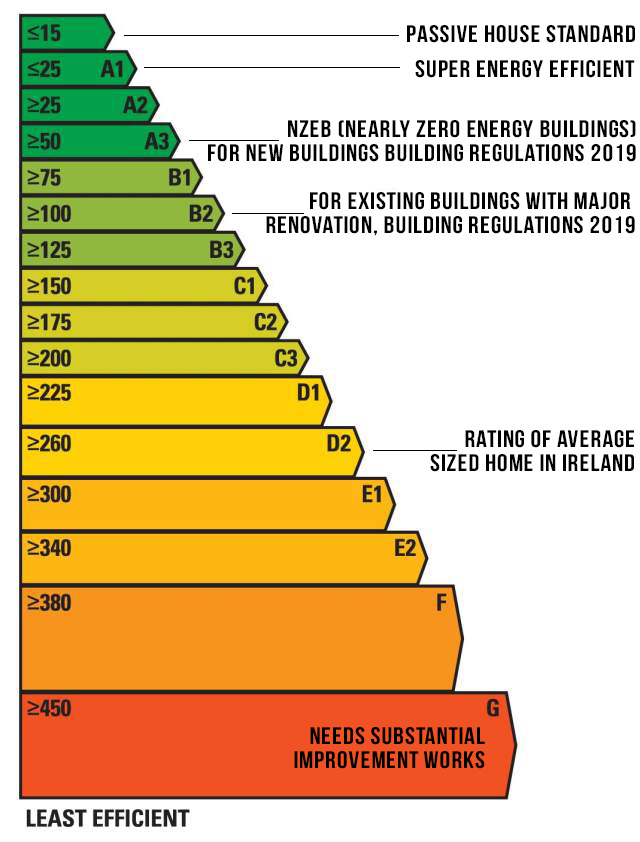In Ireland the average sized home has a score of D1, which means it consumes more than 225 kWh/m2 in a year.
To comply with the new building regulations 2019 all new buildings require to be nearly Zero Energy Buildings (nZEB) – a minimum of A3 rating.
While existing buildings which undergo major renovations need to achieve a B2 rating for the existing part of the building.
The Energy Performance Indicator is expressed as primary energy usage (in kWh per m2 floor area and year) that means it includes
- The energy consumption that normally appears on your energy bills and
- An allowance for the energy ‘overhead’ incurred in extracting, processing and transporting a fuel, the generation efficiency of power stations is included.
The Carbon Dioxide Emissions of each property (in kgCO2 per m2 floor area and year) ranges between 0-120, with ‘0’ being the best rating (carbonneutral) and ‘120’ being the worst. Emissions at power stations associated with the dwelling’s electricity use are included.
The BER assessment covers energy use for space heating, water heating, ventilation and lighting calculated on the basis of the average number of occupants in buildings of a similar size.
From the 1st of January 2009, a BER Certificate has become compulsory for all homes being sold or offered for rent in Ireland. A Provisional BER Certificate is required prior to the construction commencement of a new building in order to show compliance with the Building Regulations Part L 2019. A full BER Certificate is also required if you want to avail of grants from the Sustainable Energy Authority of Ireland’s (SEAI) Better Energy Home Scheme.
Book Susanna as your independent SEAI registered BER Assessor and get your BER Certificate!

